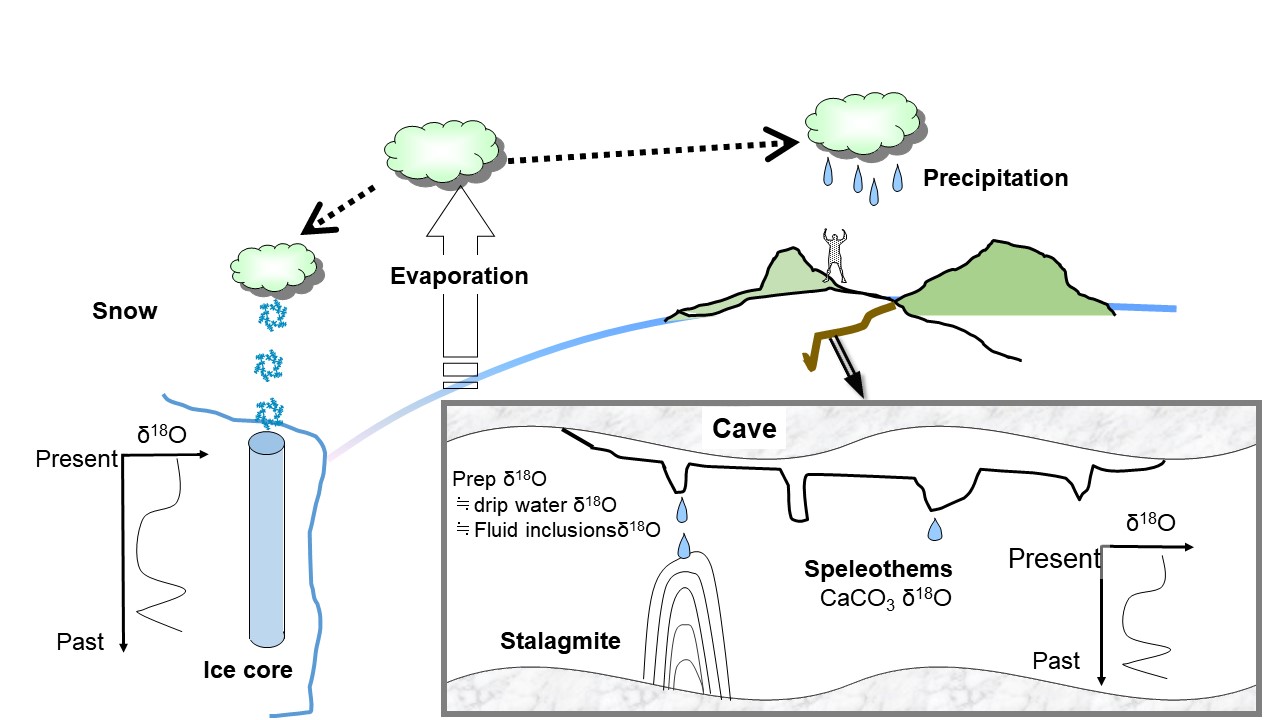Focusing on the water circulation on the Earth's surface, we investigate unique and imporatant climate archvies (ice core, speleothems) using oxygen and hydrogen stable isotopic ratios of water. We also conduct present-day field works and experiments to improve the interpretation of the climate proxies.

Speleothems
-Paleocimate research using fluid inclusions in speleothems
We are conducting research focusing on the small amount of water (fluid
inclusions) entrapped in stalactites. We have developed a high sensitivity
method for measuring the isotope ratio of hydrogen and oxygen in fluid
inclusions, and are conducting isotope analysis aiming to reconstruct the
temperature in the past.
Relataed paper (open access) ⇒(
Uemura et al, Geochimica et Cosmochimica Acta, 2016)
Ice cores
Antarctic temperature reconstruction

We are developing a high accuracy temperature reconstruction method by analysis of ice core drilled at Antarctic Dome Fuji station.
By combining the two isotope ratio of water (oxygen and hydrogen), it is possible to estimate the temperature of the mositure-sourece ocean where the water vapor has been evaporated, in addition to the temperature of Antarctica.
◎Antarctic and mositure-source ocean temperatures over the past 720,000 years, and discussed thier relation with atmospheric CO2. Related paper (open access)⇒(Uemura et al., Nature Communications, 2018)。
Climate Proxy
Dominant influence of the humidity on the 17O-excess in subtropical rainwater
Early studies suggest that the triple oxygen isotopes tracer, denoted as
17O-excess, reflects changes in the relative humidity in moisture source
regions. Subsequent studies, however, suggest the importance of additional
effects, such as snow formation and rain drop re-evaporation. We show a
two-year record of the 17O-excess in precipitation on a maritime island (Okinawa) in the East Asian
monsoon region. Interestingly, we demonstrate that the reconstructed relative
humidity is quantitatively consistent with observations in the oceanic
moisture source. These results suggest that the 17O-excess in precipitation
in subtropical region is a unique quantitative tracer and proxy for hydrological
and paleoclimate studies.
Related paper ⇒ ( Uechi and Uemura, Earth and Planetary Science Letters , 2019)